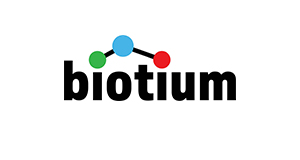HSP27 (Heat Shock Protein 27) (rHSPB1/774), CF740 conjugate, 0.1mg/mL
HSP27 (Heat Shock Protein 27) (rHSPB1/774), CF740 conjugate, 0.1mg/mL
SKU
BTMBNC742308-100
Packaging Unit
100 uL
Manufacturer
Biotium
Availability:
loading...
Price is loading...
Description: MAb rHSPB1/774 reacts specifically with heat shock protein HSP27 in human and monkey tissues and cell lines such as MCF-7. HSP27, also referred to as the Estrogen-Regulated 24K protein and HSP28, is one of several small heat shock proteins produced by all organisms studied. HSP27 synthesis is induced by elevated temperature, as well as by estrogen in hormone responsive cells. Interestingly, human HSP27 also shares greater than 50% homology with low molecular weight Drosophila HSPs and mammalian alpha-crystalline lens protein. Because of the estrogen responsive nature of HSP27, this protein has been studied extensively in human estrogen responsive tissues such as cervix, endometrium and breast tissue. Therefore HSP27 may be useful in classifying various hormone sensitive tumorsPrimary antibodies are available purified, or with a selection of fluorescent CF® Dyes and other labels. CF® Dyes offer exceptional brightness and photostability. Note: Conjugates of blue fluorescent dyes like CF®405S and CF®405M are not recommended for detecting low abundance targets, because blue dyes have lower fluorescence and can give higher non-specific background than other dye colors.
Product origin: Animal - Mus musculus (mouse), Bos taurus (bovine)
Conjugate: CF740
Concentration: 0.1 mg/mL
Storage buffer: PBS, 0.1% rBSA, 0.05% azide
Clone: rHSPB1/774
Immunogen: Recombinant full-length human HSPB1 protein
Antibody Reactivity: HSP27
References: Edwards DP et. al. Biochem Biophys Research Commun, 93:804-812, 1980. /Ciocca DR et. al. Breast Cancer Research and Treatment, 20:33-42, 199
Entrez Gene ID: 3315
Antibody Application Notes: For coating for ELISA, order Ab without BSA/Higher concentration may be required for direct detection using primary antibody conjugates than for indirect detection with secondary antibody/Optimal dilution and staining procedure for a specific application should be determined by user/Recommended starting concentrations for titration are 1-2 ug/mL for most applications, or 1 ug/million cells/100 uL for flow cytometry
Product origin: Animal - Mus musculus (mouse), Bos taurus (bovine)
Conjugate: CF740
Concentration: 0.1 mg/mL
Storage buffer: PBS, 0.1% rBSA, 0.05% azide
Clone: rHSPB1/774
Immunogen: Recombinant full-length human HSPB1 protein
Antibody Reactivity: HSP27
References: Edwards DP et. al. Biochem Biophys Research Commun, 93:804-812, 1980. /Ciocca DR et. al. Breast Cancer Research and Treatment, 20:33-42, 199
Entrez Gene ID: 3315
Antibody Application Notes: For coating for ELISA, order Ab without BSA/Higher concentration may be required for direct detection using primary antibody conjugates than for indirect detection with secondary antibody/Optimal dilution and staining procedure for a specific application should be determined by user/Recommended starting concentrations for titration are 1-2 ug/mL for most applications, or 1 ug/million cells/100 uL for flow cytometry
| SKU | BTMBNC742308-100 |
|---|---|
| Manufacturer | Biotium |
| Manufacturer SKU | BNC742308-100 |
| Package Unit | 100 uL |
| Quantity Unit | STK |
| Reactivity | Human, Mouse (Murine), Rat (Rattus), Primate, Sheep (Ovine), Monkey (Primate), Chicken |
| Clonality | Recombinant |
| Isotype | IgG1 kappa |
| Host | Mouse |
| Conjugate | Conjugated, CF740 |
| Product information (PDF) | Download |
| MSDS (PDF) | Download |

 Deutsch
Deutsch







